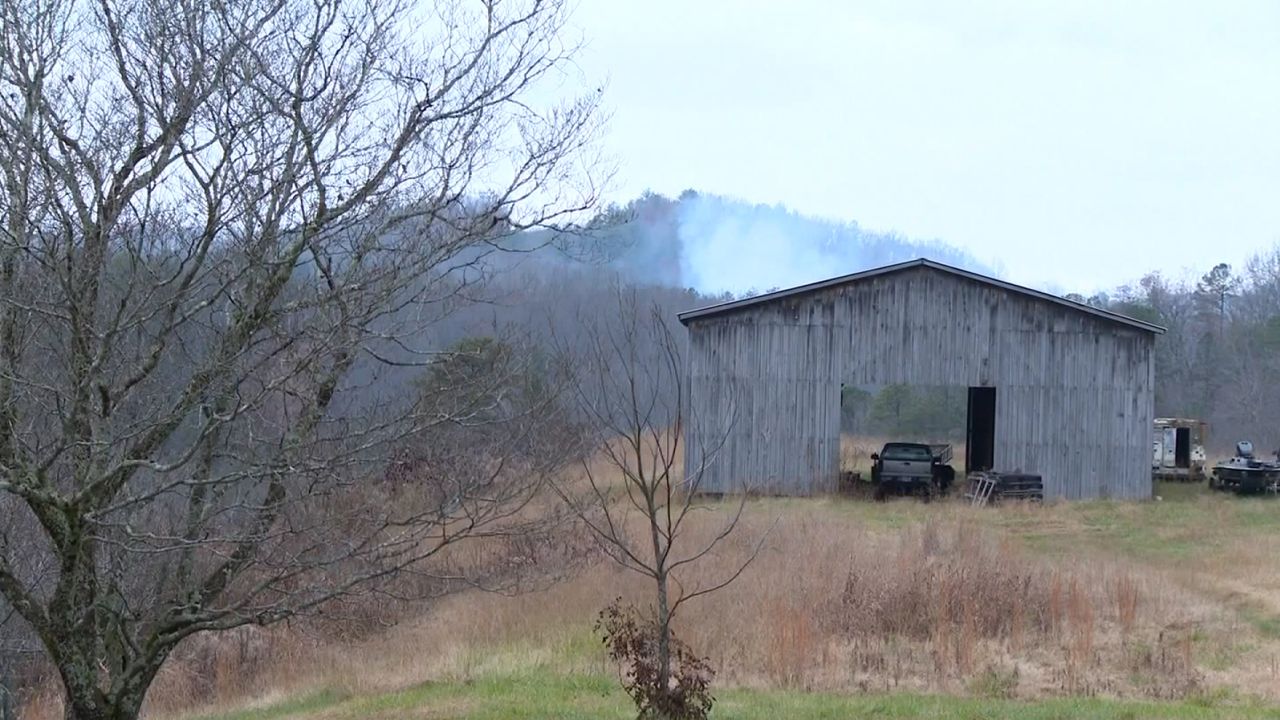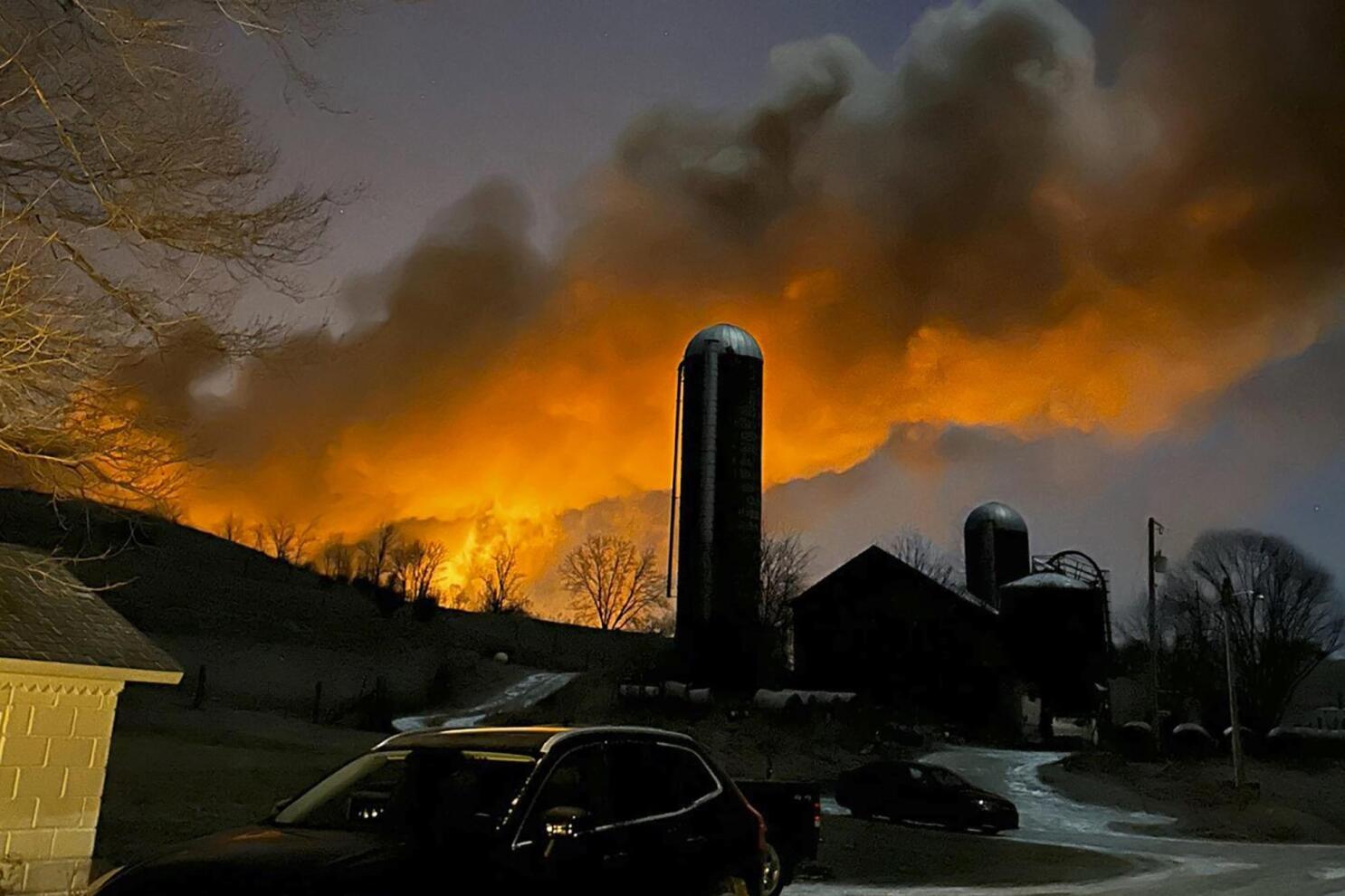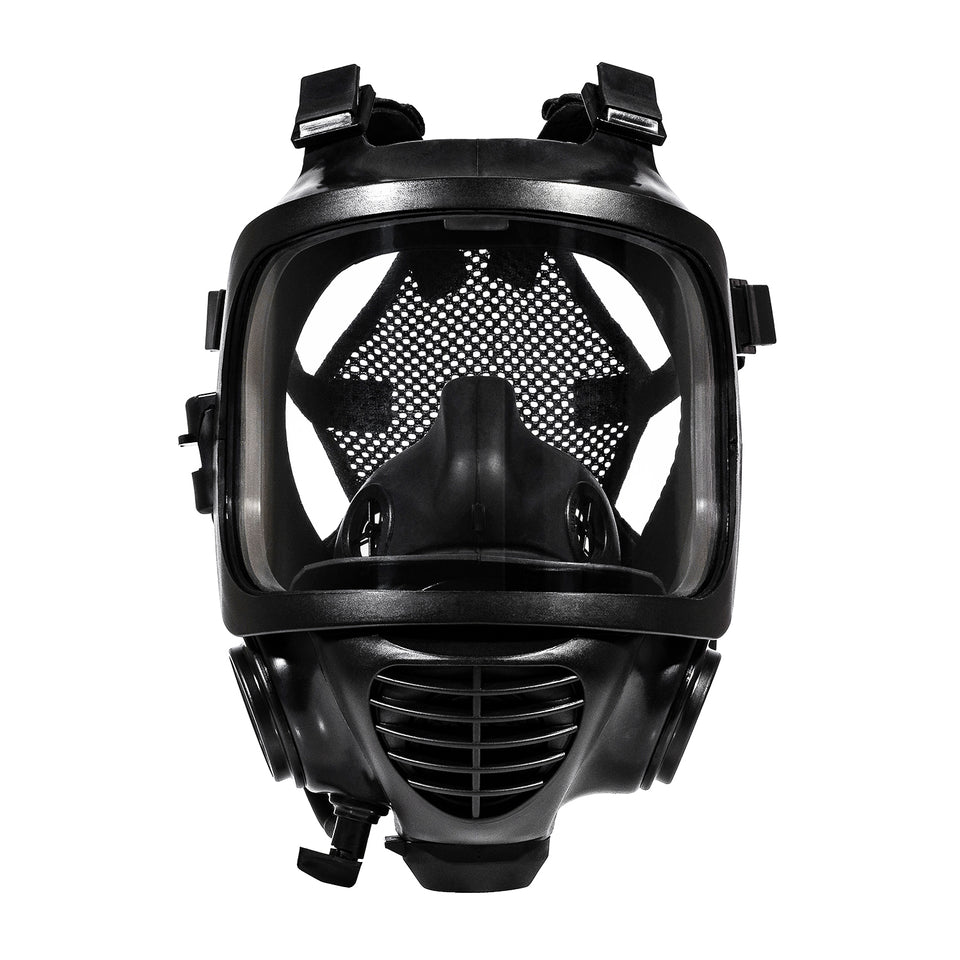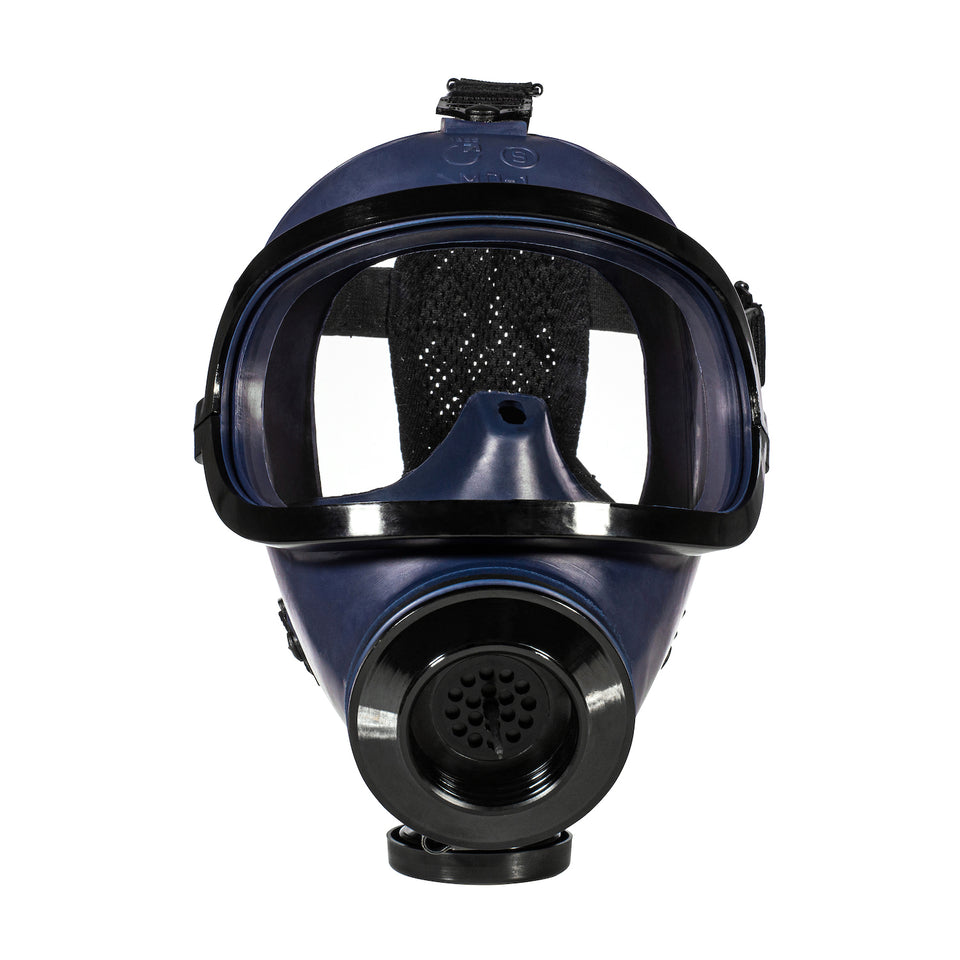It is autumn in Rockcastle county, Kentucky. Among the rolling foothills, green ruffs of tulip trees and pin oaks have grown tinged with russet, and ruby-throated hummingbirds have migrated to their wintering grounds in Central America.
In a month’s time, it will be winter, and the iconic bluegrass fields of Rockcastle county will become dotted with hoarfrost. Yet in the midst of this serene seasonal transition, disaster has struck.
It began around 2:30 PM on November 22, 2023, when a CSX freight train derailed north of Livingston–a quaint town roughly sixty miles south of Lexington. The incident, which involved sixteen train cars, quickly escalated as two of them–carrying molten sulfur–were breached and caught fire.
This hazardous situation prompted Bluegrass State officials, including Governor Andy Beshear, to declare a state of emergency in Rockcastle county and urge an evacuation of the area.
If this sequence of events sounds familiar, it’s because a similar calamity unfolded in the state’s northeastern neighbor of Ohio earlier this year. Back then, an axle issue caused a Norfolk Southern train to derail and crash into a nearby gas station–sending a billowing “mushroom cloud” into the evening sky.
Though the Kentucky train derailment was relatively minor by comparison, it nevertheless raises a few questions about the seemingly unending onslaught of chemical spills in the United States in recent years. How is it, for example, that an incident of this kind has happened again? And how can one prepare for an unintended chemical release in one’s own locale?
Let’s review.
Table of Contents
-
01
The Dangers of Molten Sulfur
-
02
The Kentucky Train Derailment: Response and Rescue
-
03
A Community Displaced
-
04
Kentucky State of Emergency: Recovery and Rebuilding
-
05
An Increase in Chemical Accidents
-
06
How to Prepare for a Train Derailment
-
07
Final Thoughts
-
08
Frequently Asked Questions
The Dangers of Molten Sulfur

The distinct canary yellow of molten sulfur. (Image courtesy of maps-of-the-world.com)
Molten sulfur, the primary hazard involved in the Kentucky train derailment, is about as unpleasant a substance as it sounds. A bright yellow liquid, it is known for its potential to release sulfur dioxide when burned.
This colorless gas–carrying a characteristically pungent, stinging odor–poses significant health risks. According to the U.S. Environmental Protection Agency, sulfur dioxide can cause respiratory issues, particularly in those with asthma.
Worryingly, sulfur dioxide levels exceeded 5 parts per million near the spill site and surpassed 2 parts per million in Livingston, as reported by CSX officials. For perspective, the CDC states that airway resistance occurs in healthy adults at 5 parts per million of sulfur dioxide, and respiratory protection is necessary at levels of 20 parts per million or higher.
Accordingly, evacuation was recommended due to the prodigious smoke issuing from the derailment, which increased the likelihood of locals smelling sulfur dioxide and experiencing related symptoms.
The Kentucky Train Derailment: Response and Rescue
The immediate response to the derailment was, in a word, multifaceted.
CSX, the train operator–alongside local authorities–deployed specialized equipment for air monitoring. The goal was to contain the fire–which, as of early reports, was 50% contained–and manage the sulfur dioxide emissions.
Alongside this, the U.S. Environmental Protection Agency sprang into action. EPA on-site coordinator Matthew Huyser emphasized the efforts to reduce sulfur dioxide levels to zero, a goal seemingly within reach as firefighting efforts proved effective.
Meanwhile, local shelters, like a middle school in Mount Vernon, opened their doors to evacuated Livingston residents.
“I got so aggravated, I said words that I probably shouldn’t have,” said one local woman, interviewed by WKRN News at the middle school. “But then I realized, when [the mayor] picked us up, that somebody does care. At least they cared enough to come and get us. So we got a lot to be thankful for.”
A Community Displaced
The derailment's timing, on the eve of a major holiday, added an emotional layer to the technical challenges. Residents, like Linda Todd, faced the heart-wrenching decision to abandon their Thanksgiving preparations.
“I was freaking out because I said, ‘We are cooking–we got turkeys in the ovens. We can’t leave,’” recounted Todd. “They were like, ‘You have to go. It is a bad situation–you have to go.’”
For the over one hundred displaced individuals (and their pets), CSX's commitment to providing food, lodging, and necessities–including Thanksgiving dinners–provided a small measure of solace amid their unceremoniously interrupted festivities.
Kentucky State of Emergency: Recovery and Rebuilding

Livingston on a more tranquil day. (Image courtesy of CNN.)
By Thursday afternoon, following the extinguishing of the fire, officials announced it was safe for residents to return home.
CSX's statement highlighted the shift in focus towards removing the derailed cars and recovering spilled products. The cause of the incident remained under investigation, with CSX teams concentrating on environmental recovery.
Yet as the immediate dangers subsided, the long-term implications of the Kentucky train derailment began to surface, like environmental impact, challenges in cleanup and restoration efforts, and legal and regulatory scrutiny for the rail company involved.
An Increase in Chemical Accidents

The East Palestine sky, illuminated by the February train derailment. (Image courtesy of AP News.)
As previously reported, the United States has borne witness to a sharp uptick in unintentional chemical releases–train derailments to pipeline spills, truck crashes, and power plant leaks.
In fact, a Guardian analysis revealed that these accidents are happening, on average, every two days–while the Coalition to Prevent Chemical Disasters put the estimate at every thirty-six hours
But why is this? Experts point to a few reasons:
 As with so many other headline news stories, the impacts of climate change are relevant here. That’s because many U.S. chemical facilities are situated in areas that are increasingly susceptible to severe weather events, like floods and hurricanes
As with so many other headline news stories, the impacts of climate change are relevant here. That’s because many U.S. chemical facilities are situated in areas that are increasingly susceptible to severe weather events, like floods and hurricanes Aging infrastructure: it’s not the flashiest of talking points–yet it’s a deeply important one. Older facilities and transportation methods, after all, are more prone to failures, leaks, and accidents
Aging infrastructure: it’s not the flashiest of talking points–yet it’s a deeply important one. Older facilities and transportation methods, after all, are more prone to failures, leaks, and accidents Amid all the hubbub about train derailments, there is an ongoing debate about the effectiveness of current regulations. While industry representatives argue that safety is improving, worker and community advocates contend that regulatory loopholes, ineffective enforcement, and underreporting of incidents have led to a false sense of security.
Amid all the hubbub about train derailments, there is an ongoing debate about the effectiveness of current regulations. While industry representatives argue that safety is improving, worker and community advocates contend that regulatory loopholes, ineffective enforcement, and underreporting of incidents have led to a false sense of security. While some of the contributing factors are complex, others are simply a matter of arithmetic. Here, we refer to the higher volume of hazardous materials being produced and transported across the country. As the quantity of these materials increases, so too does the likelihood of accidents during their handling and transit.
While some of the contributing factors are complex, others are simply a matter of arithmetic. Here, we refer to the higher volume of hazardous materials being produced and transported across the country. As the quantity of these materials increases, so too does the likelihood of accidents during their handling and transit. Leafing through the MIRA Safety archive, a throughline begins to take shape: namely, the importance of emergency preparedness. From famed meltdowns like Fukushima and Chernobyl, to recent disasters like the Hawaii wildfires and Tianjin chemical explosions, insufficient emergency response and evacuation planning is woefully common. And though it is not the source of the problem, this lack of preparation can multiply the impact of incidents when they do occur.
Leafing through the MIRA Safety archive, a throughline begins to take shape: namely, the importance of emergency preparedness. From famed meltdowns like Fukushima and Chernobyl, to recent disasters like the Hawaii wildfires and Tianjin chemical explosions, insufficient emergency response and evacuation planning is woefully common. And though it is not the source of the problem, this lack of preparation can multiply the impact of incidents when they do occur.How to Prepare for a Train Derailment
To protect against sulfur dioxide–the chemical released in this derailment–there are two filters that are suitable.
The first is the NBC-77 SOF filter, which can effectively protect the wearer from an environment where the concentration of sulfur dioxide is as high as 5,000 parts per million (ppm). It can do so for a duration of up to twenty-five minutes.
As our go-to “all rounder” filter, the NBC-77 SOF can also protect you from other hazardous chemical releases, such as the ones found in East Palestine, Ohio. This includes vinyl chloride, isobutylene, butyl acrylate, ethylhexyl acrylate, and ethylene glycol monobutyl.

The NBC-77 SOF filter.
Our new VK-530 filter, meanwhile, provides the same level of defense, with added smoke protection. This makes the filter a wise investment, as both the East Palestine and Livingston train derailments issued copious amounts of smoke.

The VK-530 filter.
Both of these filters can be used with the CM-6M gas mask: our bestselling, extensively tested tactical gas mask. With an integrated hydration system and a whole family of snap-on accessories (like the MIRAVISION Spectacle Kit), this easy-to-use mask is our top recommendation for adult civilians.

The CM-6M gas mask.
For children–ages two to twelve–we recommend the MD-1 gas mask. With a long hose, this respirator is designed to divert filter weight off the face and into a carrying case or bag. It can also be hooked up to a PAPR, for children who lack the lung capacity to blow up a balloon under their own steam.

The MD-1 gas mask.
Lastly, don’t forget about your furry friends. In Livingston, 112 residents evacuated with forty pets–members of the family in their own right, to be sure. It was from this perspective that we developed the MIRA Safety Animal Ark, which is designed to fit one small or medium-sized dog, or two cats, up to 22 lbs total. That way, no one in the family gets left behind.

The MIRA Safety Animal Ark.
Final Thoughts
Here at MIRA Safety, we discuss preparations for a number of emergencies, from nuclear meltdowns to natural disasters and terrorist attacks
While all of these crises are worthy of contingency plans, chemical spills are arguably the most immediate concern that our readers ought to have. That, chiefly, is for one reason: their startling frequency–which is only increasing.
It is on this basis that we recommend establishing a comprehensive evacuation plan for your loved ones, should a chemical spill occur in your area. This must, at minimum, include a bug-out bag, bug-out vehicle, and suitable gas mask and filter for every member of your family.
As this most recent chemical spill shows us, emergencies can happen at the most inopportune of times–even, as Livingston resident Linda Todd learned, when there’s turkey in the oven. So with the yuletide season nearly upon us, make sure that you’re able to evacuate your home at a moment's notice–Christmas ham in tow or not.
